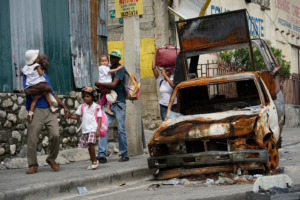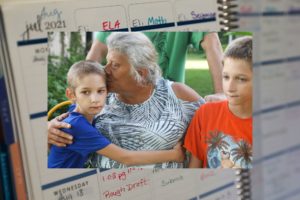More than 360,000 internally displaced persons in Chad’s Lake province are facing a “double” crisis, exposed to security and environmental risks, the UN International Organization for Migration (IOM) has reported, highlighting the need to strengthen resilience of affected communities.
According to Paul Dillon, an IOM spokesperson, while the region has been a target of repeated attacks by insurgents since 2015, the situation has worsened dramatically in 2020.
“Recurrent security attacks and incursions by non-State armed groups since the beginning of the year prompted the Chadian Government in March to declare the departments of Fouli and Kaya, two of Lake Chad’s borderlands departments ‘war zones’,” he said.
Since April, the number of the displaced has increased by almost 22 per cent, according to the IOM Displacement Tracking Matrix, a tool to monitor displacement and movement of people in emergency or crisis situations.
Double crisis
Located in the western part of Chad, the Lake (or Lac) region borders Nigeria and Niger. The three nations along with Cameroon form the Lake Chad Basin, where thousands have lost their lives and millions forced to flee their homes due to attacks by non-State armed insurgents.
The crisis has also exacerbated food security, leaving many dependent on humanitarian assistance.
This is a worrying trend as the displacement is recurrent, protracted due to the deterioration of security and environmental situations, and involves large in numbers of people – IOM spokesperson
In addition to the security challenges, the situation in the Lake region has been further complicated by some of the heaviest rainfall in nearly 30 years, with roughly 400 millimetres of rainfall that resulted in flash floods in villages and fields.
“This is a worrying trend as the displacement is recurrent, protracted due to the deterioration of security and environmental situations, and involves large in numbers of people,” said Mr. Dillon.
IOM response
In response, IOM is providing emergency assistance to vulnerable populations. It has delivered more than 2,500 transitory and semi-permanent shelters to nearly 13,000 persons; and over 2,700 non-food item packages including hygiene kits, sleeping mats, clothes and basic cooking equipment for over 14,000 persons.
However, much more is needed immediately as many families are facing heavy rainfall without proper housing, with the added complexity of the COVID-19 pandemic.
In addition, three-quarters of the displaced persons IOM identified live in displacement sites, most of which are made of straw and metal shelters.
Many of them sleep in the open without adequate protection from bad weather, with limited access to amenities such as water, hygiene facilities, health services and COVID-19 protective equipment.




